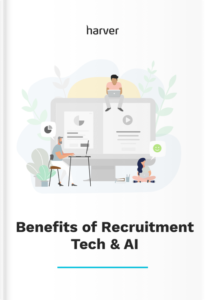“People Analytics is clearly here to stay. Many organisations are starting to invest in People Analytics teams and in tools that can help them to make sense out of all the available data. From gut feeling to evidence based, you could say.”
Like what you see?
Don’t miss out. Subscribe to our quarterly digest to get the latest TA and TM resources delivered right to your inbox.
These are the words of Tom Haak from the HR Trend Institute when we asked him last week what HR Trend had surpassed his expectations this year, and what trend he felt will become an integral part of the HR department of the future. Needless to say, a quick Google search for ‘People Analytics in HR’ will give you heaps of results; how it has changed HR, what its exact role is, how it reveals things HR might have gotten wrong, and so on and so forth.
It’s easy to get overwhelmed by this abundance of information and to figure out where to start – especially if you want to catch up on your People Analytics knowledge. Not to worry though – it’s exactly for this reason that we’ve decided to give you a mini crash course on People Analytics in HR: what are we talking about here, how are People Analytics being applied in HR, and what can we expect for the future? In short – we’ll analyse the People Analytics field and cover the basics you need to know.
Defining People Analytics
As always, it helps a lot if we know what precisely it is we’re talking about. So let’s start with a definition – or a description actually – of People Analytics. And who better to turn to for a comprehensible explanation than HR technology guru Josh Bersin, right? He describes what People Analytics is trying to do as follows: People Analytics is about bringing together all the people data in a company to understand and tackle specific business problems. These specific business problems can be related to numerous different things; recruitment, culture, sales productivity, retention, customer satisfaction, you name it.
What People Analytics often comes down to is measuring the effectiveness of HR and Learning & Development (L&D) programmes, but more broadly People Analytics means trying to understand all the employee data your company has and how this influences the business’s performance.
Here you can find the entire article on People Analytics by Josh Bersin – a very interesting read on the matter!
Now, the first question that comes up when we look at the above description is, what are these ‘people data’ we need to understand and analyse in order to solve business related issues? Well, pretty much – all – employee related data you can think of: gender, salary, location and job history are a few of the more generic data, but psychological data like engagement, satisfaction and mood are examples too, as are commute time, fitness, heartbeat and voice patterns.
Here you can find more examples of people data.
This doesn’t mean every company gathers all this different data (yet) of course; People Analytics is getting traction, but many organisations are just starting to look into it. Some of these people data examples are something for the (near) future, but the basic idea is – the more types of people data you gather, the more likely it is you’ll find a solution for the business problems you’re dealing with. Providing you know how to analyse and use the data obviously…
Using People Analytics
There are countless examples of how companies are using People Analytics to improve their business. We’ll name a few, related to various issues:
Retention
We enter the world of predictive analytics with this one. By collecting people data HR practitioners try to identify the most common causes of employee turnover among their workforce. Possible patterns in the behaviour of leaving staff can then be analysed, and HR managers can decide if they want to try and keep their team members from leaving or not. Data you can think of in this regard are: activity on LinkedIn and other social networks, the type of office people are working in – the amount of light that gets in, the possibility of working together with others etc. – and absence/sick leave figures for example.
Recruitment
The regular readers among you probably know what’s coming here. Using people data to predict an applicant’s future success in a certain role is part of what we’re doing at Harver. Our Predictive Preselection system TalentPitch helps companies identify the personality traits that are required to perform well in a specific job. The profiles of an organisation’s best performing people – made out of people data – can be analysed and taken into account in the process. Here you’ll find more on Predictive Analytics (PA) in HR, and don’t forget to download your free E-Book on PA at the bottom of this page before you go!
What to Expect?
The potential of People Analytics in HR is big. With the right tools, the right people to read & understand the data, and a clear strategy, pretty much anything is possible. Meaning, there’s probably no business problem that can’t be addressed. At the same time, finding people who know what to do with this data is one of the challenges for HR. Gathering information is one thing, but doing so in an efficient, useful manner, is another. Too often still, companies have heaps of data stored in different places and under the supervision of different teams. As a result, they’re not benefitting from their people data as much as they could.
Here you’ll find 6 Do’s and Don’ts for when you’re Datafying your organisation.
And then we have this thing called ‘algorithm aversion’ Tom Haak spoke about; people having more faith in human beings than in machines. As long as HR practitioners stick with their ‘gut’, we can have the best People Analytics tools in the world out there, but it won’t change a thing. HR is after all an industry that tends to move carefully and at a not-so-fast pace. So all in all, recent developments in People Analytics are very promising and things seem to be going in the right direction, but we’re definitely not there yet.
How AI & recruitment technology is changing recruiting experience
Find out how tech has helped other companies grow by enhancing both the recruiters’ and candidates’ experience!



